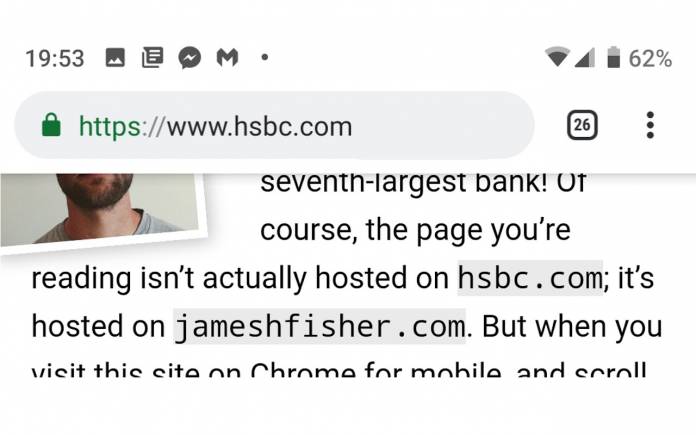
Phishing is never fun. Well, for hackers, it is something exciting and intriguing because they never know what kind or how much information they can fetch. As for mobile users, any form of phishing must be avoided. The search giant has come up with a security feature recently, telling the public how to distinguish real from fake websites. Apparently, there is a security issue that allows fake web addresses to show up on some website being browsed using Chrome for mobile.
Officially called as the ‘inception bar’, This lets hackers deceive by masking real website addresses by using fake URLs. The latter show up instead without the knowledge of the user that a site isn’t real because it even appears with a padlock icon.
Not all websites can be secure and legit when there’s the inception bar. It’s “deception” of the highest kind on Chrome mobile browser. It sometimes appears dynamic because of contents that are interactive.
Developer James Fisher has noted the problem that will allow malicious attackers and sources to access one’s mobile system. The danger comes when important data and login credentials are required. Regular websites are not a problem when only reading or browsing is required. A fake webpage can even elicit a fake response that poses more trouble for the browser.
Fisher was the one who created the inception bar. You should be mad at him but he was also victimized one time. He shared the information to fix a security flaw the Chrome team needs to work on. Google has already been informed about the issues. Cross your fingers it can be fixed soon.
There is no word on how to properly guard oneself against this attack. You can try switching back to normal mode to see the fake URL address/es. Feel free to go to Reader mode or change background theme to check any UI element that may be fake.









